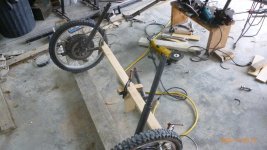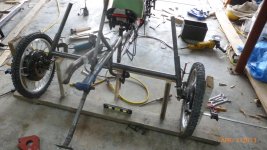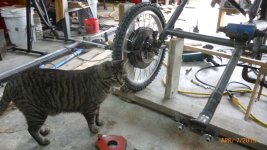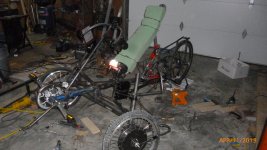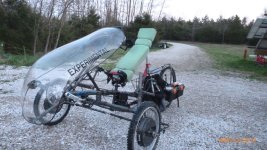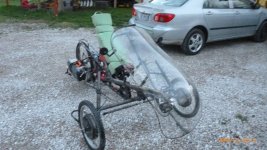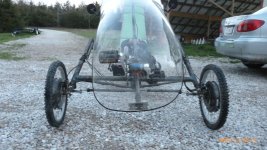llile
1 kW
- Joined
- Dec 18, 2010
- Messages
- 457
Bah! The tilting frame is manageable without batteries, however with the weight of batteries it is unmanageable. Although a two wheeler works fine with heavy batteries, even off balance, the three wheeler doesn't. Rather than try to explain this, I'll leave it at this - once the batteries are on there, it flops over to one side and it is hard to right it while riding it. Occasionally it flops over to the other side out of control. The tilting frame was a noble experiment, but it isn't ready for prime time yet. Perhaps I'll make another crack at it at a future time. I know there are three wheel vehicles with tilting frames, but this isn't going to be one of them.
Much was captured on this thread about the physics of tilting vehicles and cornering physics of trikes, and I hope it will be of use to someone who will push this experiment further into reality. Hopefully the community has benefitted, I am certain I have. Even if the experiment doesn't work, the effort is time well spent.
Meanwhile, the project is still in forward gear. Just took a spin around the neighborhood, trying out some corners at speed to see how I liked it. Bike easily accelerates to 25 MPH, zips around pretty well, handles OK. Better tires just arrived, I'll try to get some pedal power added to the mix. I'll try some of the same experiments after I lower it to see how much difference it makes. Subjective, but I suspect my inner ear has a pretty good grasp of cornering physics, despite being useless at math.
Much was captured on this thread about the physics of tilting vehicles and cornering physics of trikes, and I hope it will be of use to someone who will push this experiment further into reality. Hopefully the community has benefitted, I am certain I have. Even if the experiment doesn't work, the effort is time well spent.
Meanwhile, the project is still in forward gear. Just took a spin around the neighborhood, trying out some corners at speed to see how I liked it. Bike easily accelerates to 25 MPH, zips around pretty well, handles OK. Better tires just arrived, I'll try to get some pedal power added to the mix. I'll try some of the same experiments after I lower it to see how much difference it makes. Subjective, but I suspect my inner ear has a pretty good grasp of cornering physics, despite being useless at math.



